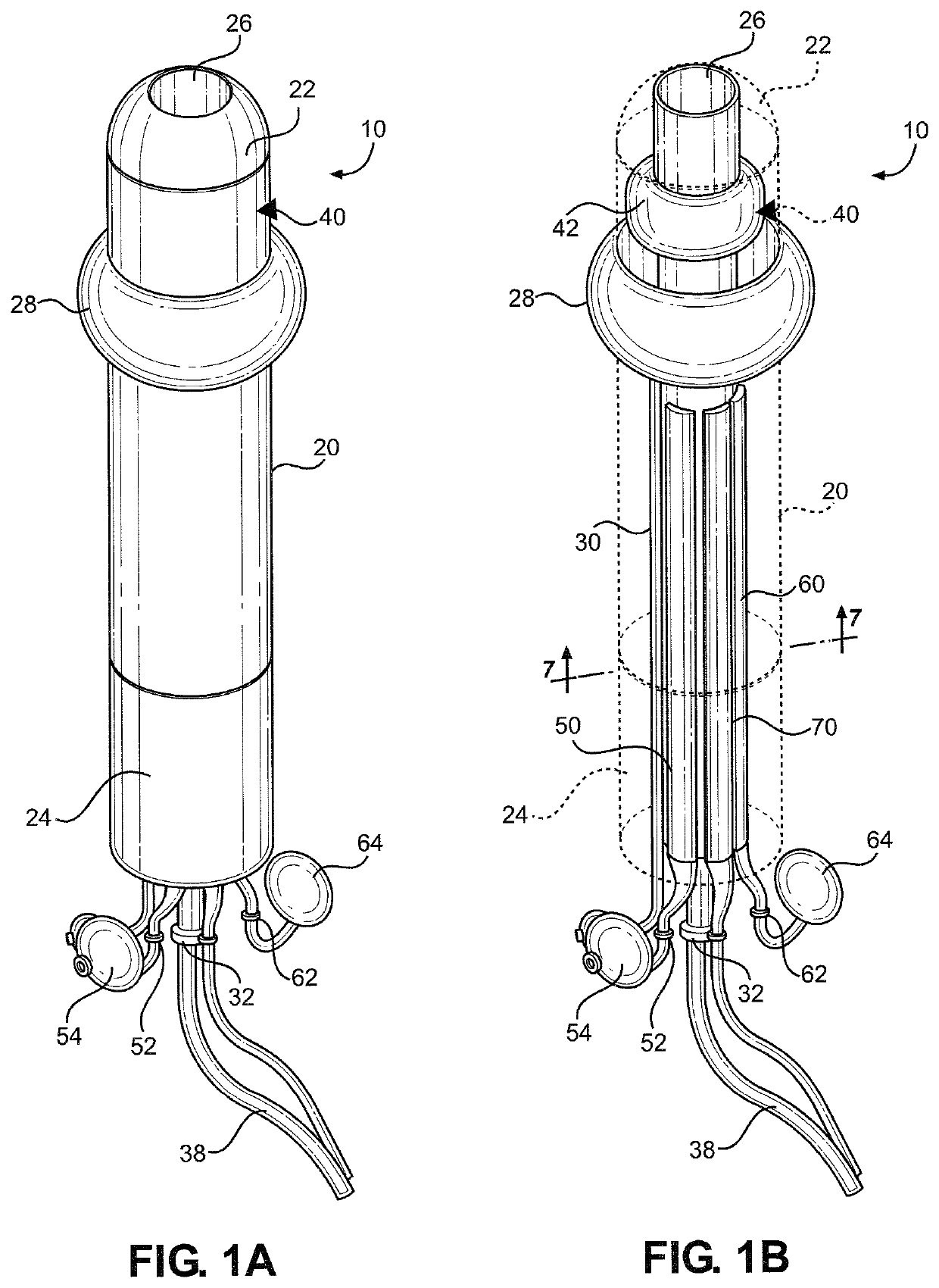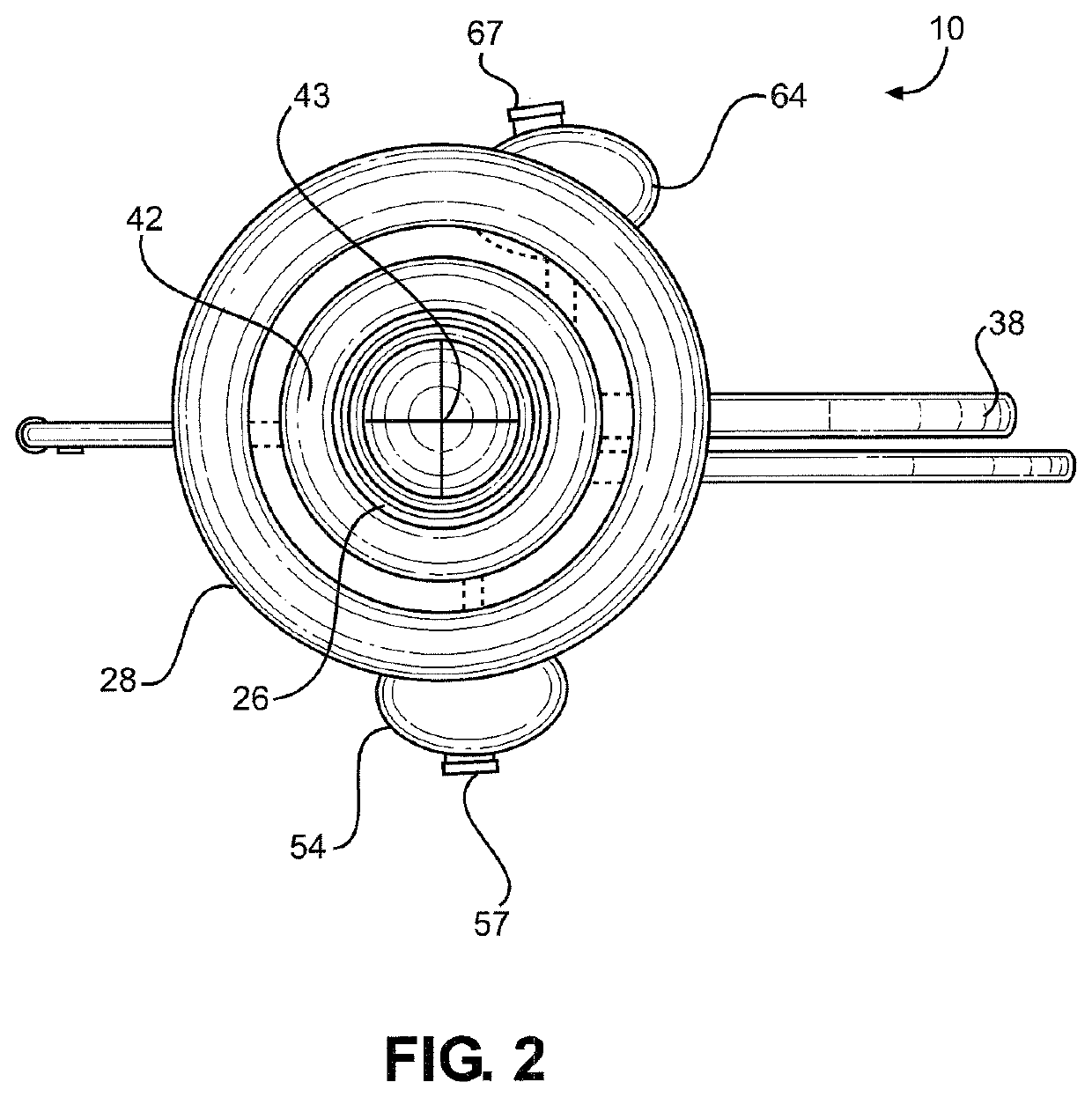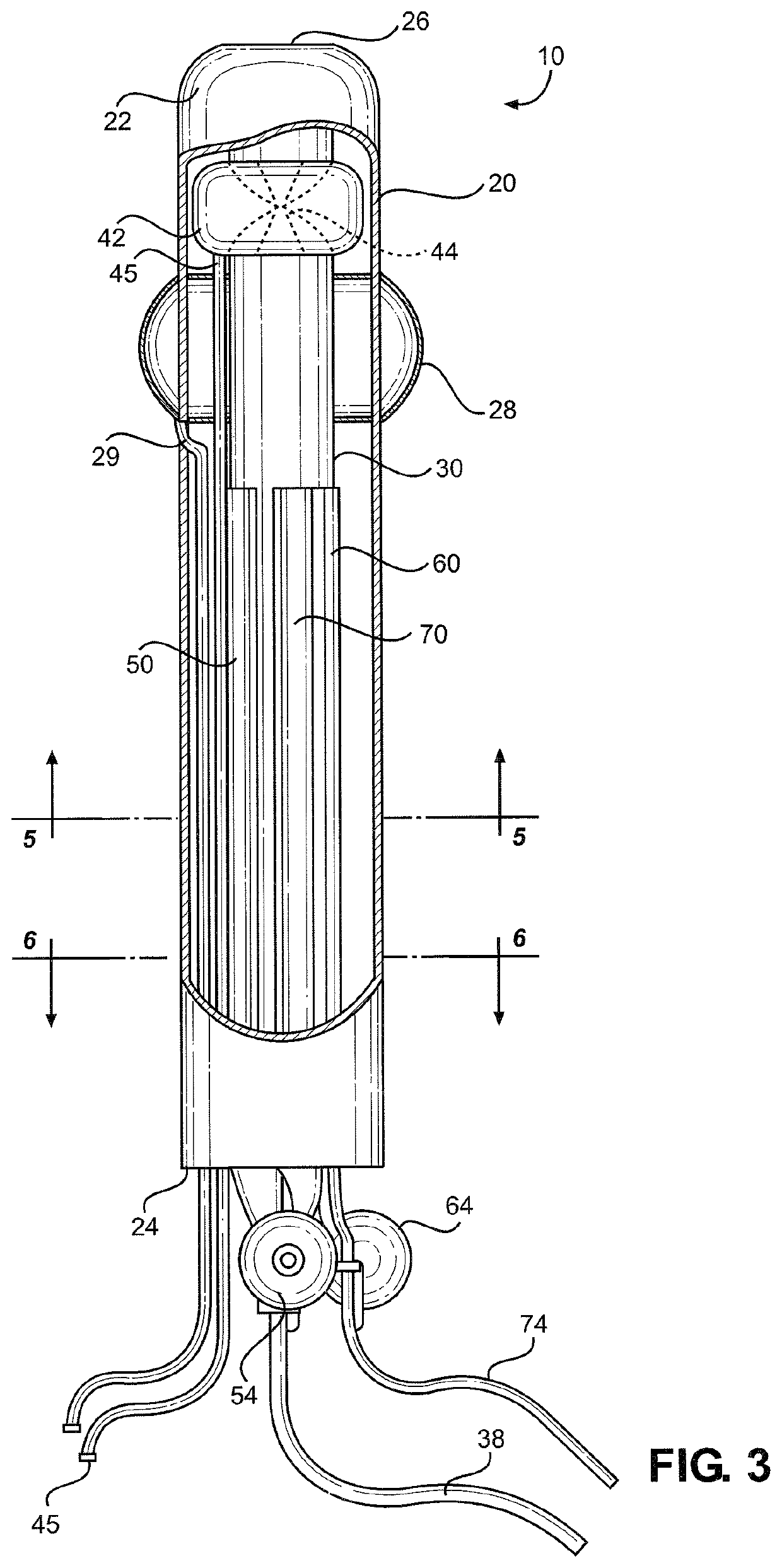Self-washing catheter
- Summary
- Abstract
- Description
- Claims
- Application Information
AI Technical Summary
Benefits of technology
Problems solved by technology
Method used
Image
Examples
Example
[0034]Turning to FIGS. 1A and 1B, a self-cleaning catheter 10 has an outer shell 20 with an insertion tip 22 opposite an open end 24. The outer shell 20 is shown in dashed lines in FIG. 1B to better demonstrate the internal structure of the self-cleaning catheter 10, The outer shell may be made of any conventional material known in the art, including silicone rubber, nylon, polyurethane, polyethylene terephthalate (PET), latex, and thermoplastic elastomers. Moreover, the exterior shape of the outer shell 20 and insertion tip 22 are not intended to be limiting as invention functions with any shape catheter known in the art. Also, although the specification is drawn to an embodiment for use as an indwelling urine catheter, the invention disclosed herein is equally suited for other medical catheters, as all catheters are prone to biofilm development and the potential for resulting infections.
[0035]The outer shell 20 and insertion tip 22 are generally dimensioned similar to conventional...
PUM
 Login to View More
Login to View More Abstract
Description
Claims
Application Information
 Login to View More
Login to View More - R&D
- Intellectual Property
- Life Sciences
- Materials
- Tech Scout
- Unparalleled Data Quality
- Higher Quality Content
- 60% Fewer Hallucinations
Browse by: Latest US Patents, China's latest patents, Technical Efficacy Thesaurus, Application Domain, Technology Topic, Popular Technical Reports.
© 2025 PatSnap. All rights reserved.Legal|Privacy policy|Modern Slavery Act Transparency Statement|Sitemap|About US| Contact US: help@patsnap.com



